At the store the other day, I looked down at the large stickers that had been placed on the floors of the checkout lines to mark social distancing. They were bright and friendly, but were already scuffed up, foot-marked and blended into the tile. Two months ago they were unimaginable; now they are a somewhat dingy and barely-noticed part of our reality. They seem almost permanent.
To an extent, that’s the truth. We are in for many months of outbreaks, cooldowns, flareups, releases, and lockdowns. The next year or more of our life will be dominated by this. More than that, our collective mental and emotional landscape will be altered for years.
How does that affect the way we talk and connect with one another? Likely more than we even realize. We know that Coronavirus has already had a huge impact on agencies. It’s going to have a lasting impact on marketing.
Right now, we are firmly in the “let’s get through this together” stage of marketing. But we will have to adjust what “through this” means. There isn’t going to be a clearly-defined end date. People will be worried about the pandemic – and potential others – for years. And that means adjusting how you talk about yourself and how you sell your services.
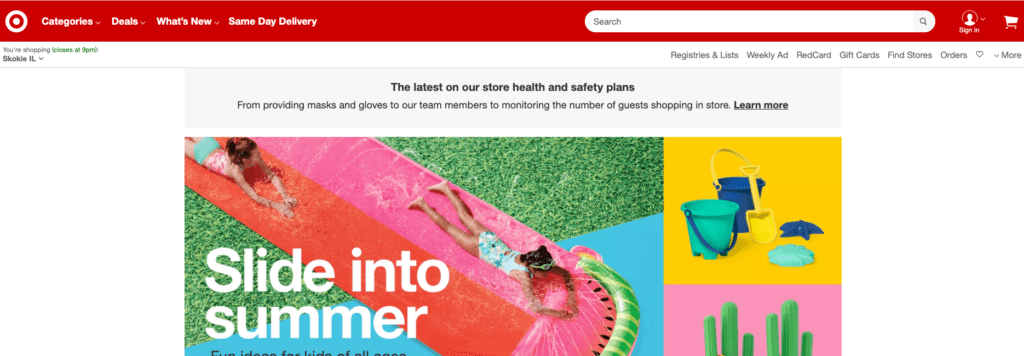
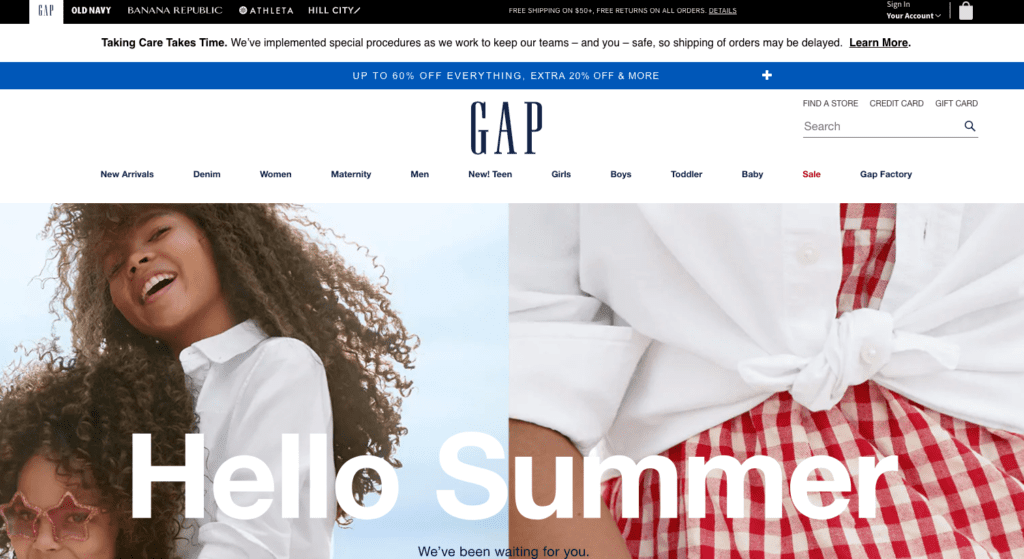
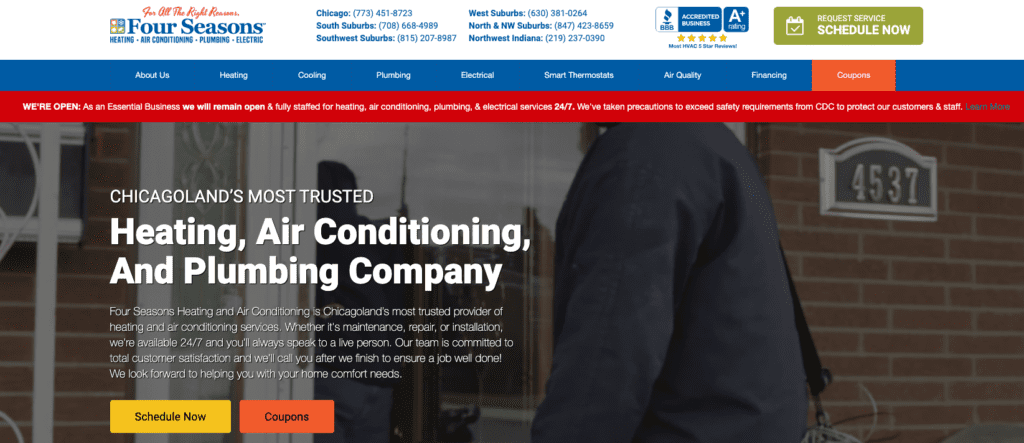
Updates on hours, health policies, and other unexpected alterations are now commonplace
This means being cognizant of people’s new realities. It means being aware that your visitors will have two sets of plans in their head when they come to your site: what they want to happen, and their contingency plans in case it can’t.
Here’s how to adjust to this new reality and align your copywriting with new expectations.
The three phases of COVID copywriting
- Phase 1: Emergency. Copywriting is focused on empathy and togetherness, with some information about altered services.
- Phase 2: (where we’re at right now): Stability. Planning for the safety and wellbeing of staff and customers as we figure out how to move forward.
- Phase 3: Uncertainty. The video is still on all our minds, but we want to be able to live as normally as possible. Nobody wants a constant reminder, but nobody can forget. How do we adjust to its presence?
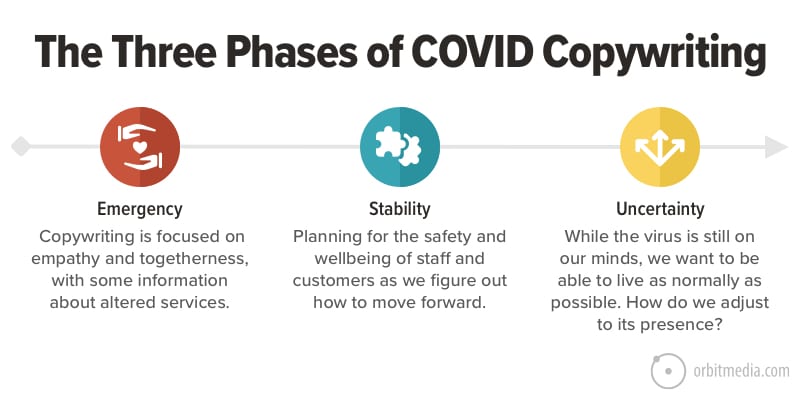
Phase 2: When unprecedented becomes precedented
You’ve probably become tired of the word “unprecedented.” Lots of people have. And one of the reasons it doesn’t seem to ring true anymore and has started to feel like a buzzy marketing word, is because things are becoming, well, precedented.
We all know people who are changing wedding plans. We all know businesses that are altering their models or even closing. Most of us are used to keeping six feet apart. Things are beginning to have a pattern.
This means we’re beginning to adjust our expectations – not just for today, but for months and even years ahead.
Writing at MarketingProfs, Richele Black talks about how to create a content strategy during a crisis. One of her key points is that you have to “check in with your audience to assess their needs.” That’s true whether you are marketing B2C or B2B…because there is always a person behind that B. And right now that person is probably somewhere between reeling from what’s happening and planning their way through it.
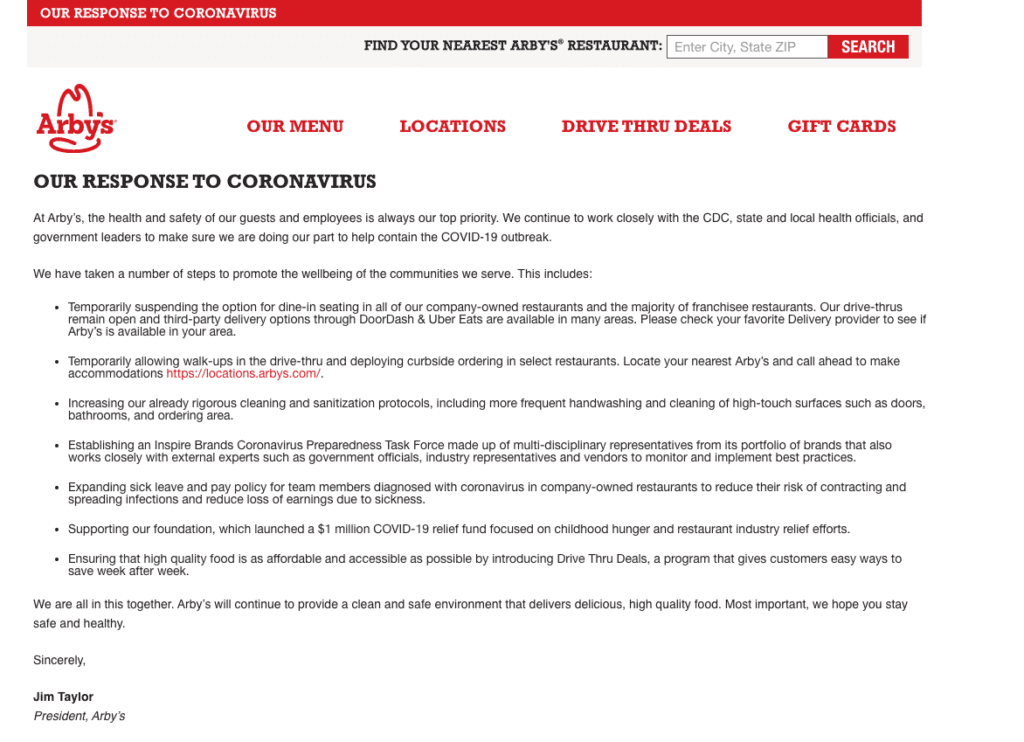
Arby’s: We’ve Got The…Hope
But as we plan our way through it, and as we begin to open up, we’ll get past this phase. Once we do, we’ll all have to adjust our marketing plans once again. We’ll have to meet the new needs.
Copywriting in Phase 3
As of this writing, we’re mostly in Phase 2. But what about down the road? What are your visitor’s long-term needs? What will people be looking for in Phase 3?
- Contingency plans. Visitors need to know that we don’t know what’s coming. We’re entering an era where we expect that plans can change suddenly. Before we anticipated continuity; for the foreseeable future we’ll anticipate rupture.
- Highlight ancillary services. Is there part of your business that makes you more flexible? Highlight that so that visitors see the breadth of your business.
- Blended offerings. How can you help people during periods where things are semi-normal and if we’re locked down again? How can you offer your services when we’re close and when we’re distant?
- Empathy to economics. Unemployment could top 14% in the second and third quarters. And while that is largely concentrated on certain sectors, there will be nationwide belt-tightening. That means your marketing shouldn’t push a hard sell but should seem to offer options for when things get better.
- Be more helpful. More free offerings, more advice, more ways to work with you. It’s not only the right thing to do, but people remember down the road who was steady and who was not.
So how do we incorporate this into copywriting? What language do we use when yesterday’s is simply inadequate?
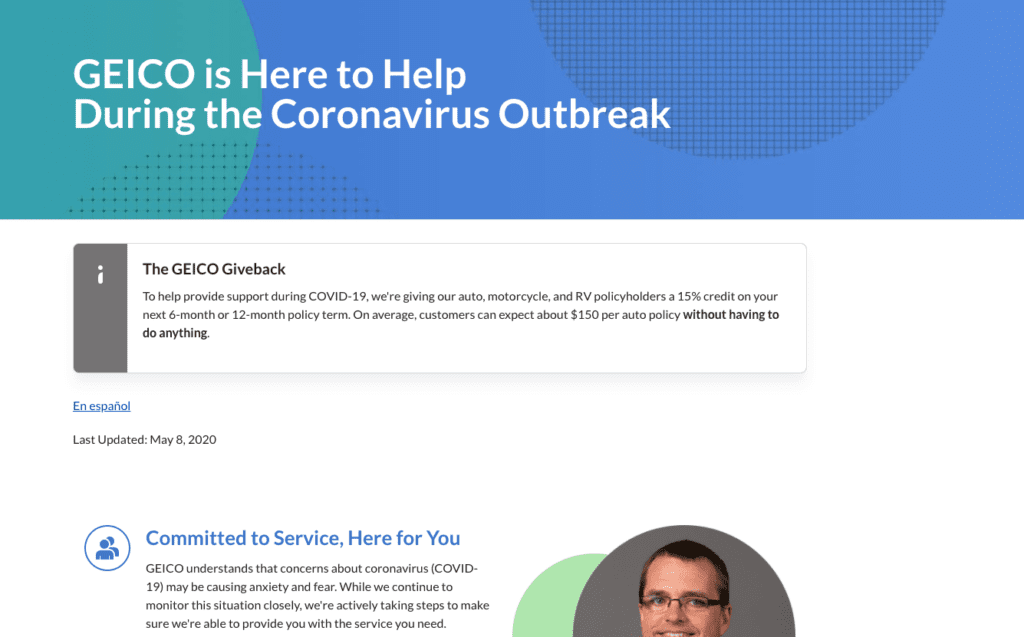
At some point, this will seem very outdated
How to write for conversion after Covid
There is a lot you can do to ready your website for the rebound. But while you are planning the actual words, you have to recognize that things can change on a daily basis. And while, as someone once said, digital ink is never dry, you don’t want to have to change your copy every day.
Now, you can’t (or shouldn’t) have two buttons at the top asking visitors to choose which version of the site matches their present reality: NORMAL TIMES or TERRIBLE TIMES. That might be a bit jarring, even for dystopian fiction lovers.
Your conversion copy has to be ready for our woozy uncertainties. It has to serve not multiple audiences, but the same audience at different stages of this strange timeline.
This doesn’t mean being explicit. People are getting oversaturated with virus marketing, and it can tilt toward insincerity. I’ll repeat that, maybe with italics.
You don’t have to be explicit about what is happening. You just have to be understanding.
Here are some examples of potential homepage subheads that anticipate needs.
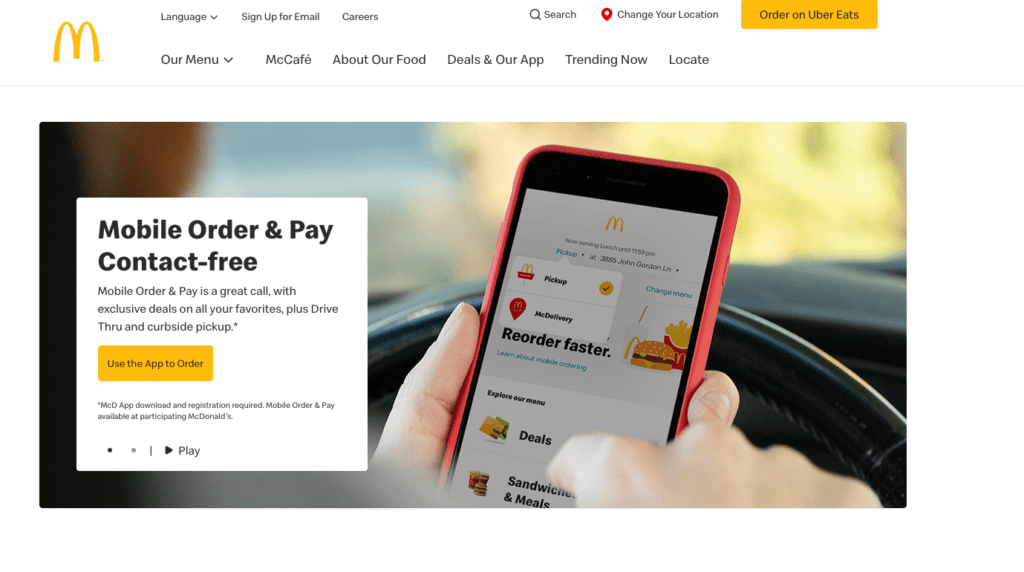
Prepare your visitors for contingency plans
A good example of this would be an events venue website. This can be B2C for weddings or parties, or B2C for conventions or corporate retreats. These are usually planned months in advance, but making plans months in advance right now seems a fool’s errand.
- DON’T: Check Out Our Contingency Plans If Coronavirus Cancels Your Wedding
- DO: Multiple Booking Options. More Flexibility, More Possibilities.
With this, you want people to know that they won’t be locked into one date at a time when “locking in” seems absurd. They will be far more willing to convert if they know that there is flexibility. You’re also turning it into a positive.

Highlight ancillary services
At Orbit, we have a client that crafts artisanal items for events that might happen months down the road. Their craftsmanship is their biggest selling point, but their ability to store their goods and ship them might be just as important now. After all, most offices don’t have room to store 1000 crystal awards for months on end.
These ancillary services are coming to the forefront. If you have that offering, make it clear.
- DON’T: Emergency Supplemental Storage
- DO: Short and Long-Term Storage For Your Creations
This seems flexible. It seems approachable. It doesn’t seem like it is an offer only good during extreme times. It seems like they have already answered your questions and answered your concerns.

Blended offerings
One of the fanciest and most gastronomically experimental restaurants in Chicago is offering, for the first time, food to go. It’s not just an aluminum pan of cheese sticks. They are giving you a lot of the raw or semi-done components so you can replicate the experience at your home.
They’ll probably stop doing that once the lockdowns are lifted. But should they? Or should they continue to offer blended services for people who don’t want to go out? Places that have established competency in both traditional and remote arenas should offer both for the time being.
- Don’t: Curbside Takeout Experience (While We’re All Terrified)
- Do: Can’t Come In? Bring It Home.
Remember, even when things open up again, people might want to stay cautious. Others will want to go out again. Offering ways to accommodate everyone, without making a fuss over it, shows that you understand the current headspace, and will meet it halfway.
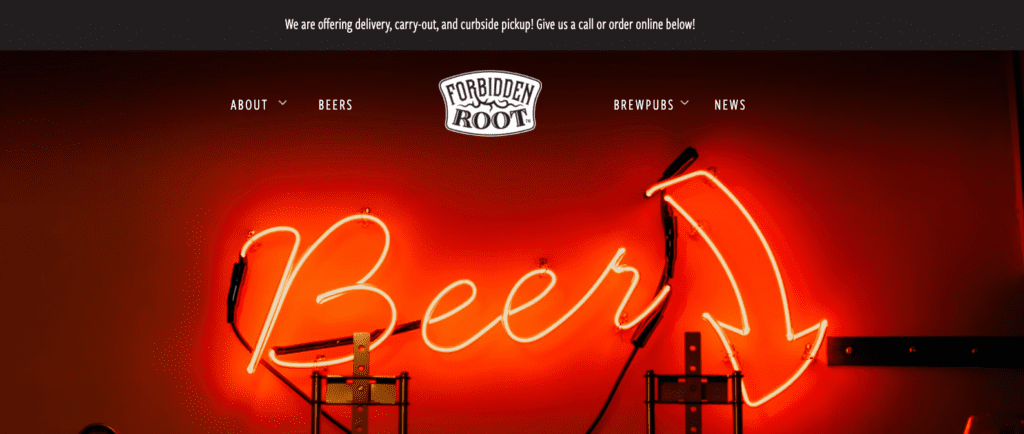
Empathy to economics
In March, consumer spending fell 7.5%, a catastrophic plunge. As of this writing, the April numbers have not been released, but they promise to be even more grim . And while there are still sectors of the economy relatively unscathed, spending habits aren’t going back to normal anytime soon.
What does that kind of empathy look like? It looks like a mix of understanding and optimism. Understand they might not be able to afford you now. But they might down the road, so setting up a relationship now will pay dividends later.
- Don’t: Can’t Afford Us Now? Come Back Later!
- Do: Book a Free Consultancy To Talk About The Future
You’re not just helping them plan to buy your product, you’re talking to them about the future. This applies to B2B businesses, of course, but also B2C. Showing that you’re not just waiting for when they’re flush, but are there to help now, can make a big difference.
(And when in doubt about how to do this, check out how data can drive empathy.)
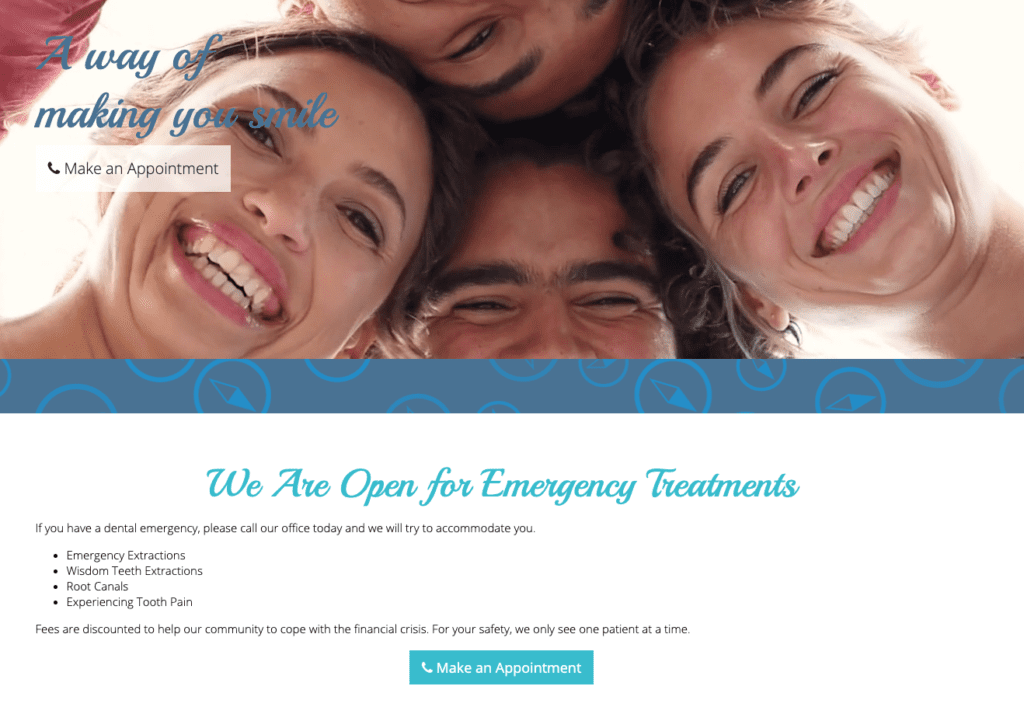
Be more helpful
A month into the pandemic, Neil Patel wrote about being helpful by offering some services for free. It was the right thing to do, and as he said would have been no matter the outcome, but there were some surprises.
With your website and business, consider what you can give away for free. Anything you can do to help people out is appreciated, especially during this difficult time. You’ll also find that it will drive you more visitors, which is a nice indirect benefit.
And that’s true. It’s true for bringing in visitors, and it is true for establishing trust down the road. How can your services help people and businesses who are hurting right now? By giving them what you can with the hope that it can turn into more down the road, but with the knowledge that no matter what you are helping someone.
- Don’t: Temporary Trial at Reduced Prices
- Do: Check Out How Our Free Version Doubles Your Marketing Dollars
It’s clear what the benefits are. It doesn’t assume further commitment. It speaks to their problems and offers a solution for people who are tightening their belts.
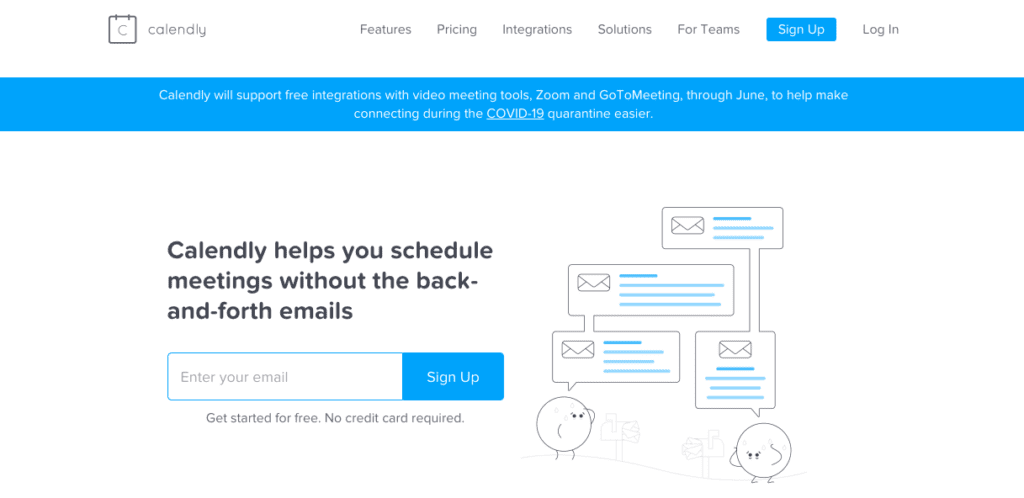
Plan for a new future
This pandemic will change the fabric of our interactions for years. Work will change. Shopping will change. Heck, I’m already wired to see someone on the sidewalk blocks ahead and plan to avoid them, and I hate that. But it’s the way we’re living now.
Copywriting has to take that into account. There will be no thick black line marking “During the Pandemic” and “After the Pandemic”. There’s just “before” and “everything else”. Adjusting to the new reality, and planning for different expectations, will get your offerings and your copywriting in the right place.
Social distancing stickers may one day come off the floor. But their imprint will be there. The memory will be there. And the memory of who handled this situation well will determine who succeeds for years to come.
The post Conversion Copywriting After Crisis: Adjusting to a New Abnormal appeared first on Orbit Media Studios.
from Orbit Media Studios https://www.orbitmedia.com/blog/copywriting-after-crisis/
via IFTTT
from
https://sarahbarnett0.wordpress.com/2020/06/08/conversion-copywriting-after-crisis-adjusting-to-a-new-abnormal/
No comments:
Post a Comment